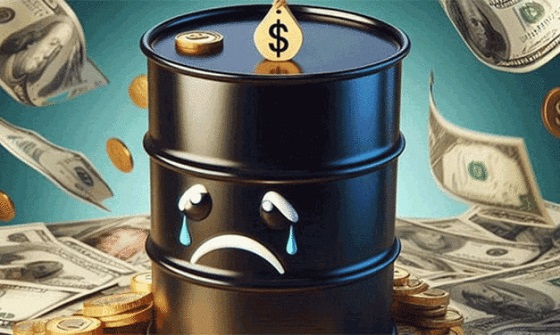Energy
The sudden, newfound support for LNG projects in Canada is truly remarkable.

From Resource Works
The sudden, newfound support for LNG projects in Canada is truly remarkable.
What’s all this? Green-leaning governments, federal and provincial, suddenly speaking in favour of liquefied natural gas (LNG) and other resource development?
It began with British Columbia Premier David Eby telling Bloomberg News that he’s optimistic that LNG Canada’s LNG-for-export plant at Kitimat, BC can be expanded in a way that satisfies its investors but without supercharging the province’s emissions.
This came as LNG Canada was reported continuing to look into possible Phase Two expansion. Such expansion would double the plant’s output of LNG to 14 million tonnes a year.
Industry reports say LNG Canada has been discussing with prime contractors their potential availability down the road. A key, though, is whether and how B.C. can provide enough electrical power.
The LNG Canada plant now is going through a pre-production testing program, and has finished welding on its first “train” (production line). LNG Canada is expected to go into full operation in mid-2025. And Malaysia’s Petronas (a 25% partner) has added three new LNG carriers to its fleet, to gear up for LNG Canada’s launch.
The Eby story noted that he has also thrown his support behind other projects — including hydrogen production and an electric-vehicle battery recycling plant — to create jobs and keep B.C.’s economy growing at a challenging time.
Then came Ottawa’s minister of innovation, science and industry, François-Philippe Champagne, who visited the Haisla Nation in B.C. to support its Cedar LNG project with partner Pembina Pipeline Corp.
Champagne declared: “This is the kind of project we want to see, where there are all the elements supporting attracting investments in British Columbia.”
His government news release said: “This project presents an exciting opportunity for Canada, as it is expected to commercialize one of the lowest-carbon-intensity liquified natural gas (LNG) facilities in the world and represents the largest Indigenous-majority-owned infrastructure project in Canada.”
Champagne went on to tell The Terrace Standard that “We are in active conversations with Pembina and Haisla First Nations. We are saying today that we will support the project, but discussions are still ongoing.’
There had already been reports that Export Development Canada is set to lend Cedar LNG $400-$500 million.
And then came federal minister Jonathan Wilkinson, announcing to the national Energy and Mines Ministers’ Conference in Calgary that Ottawa “will get clean growth projects built faster” by streamlining regulatory processes and moving to “make good approvals faster.”
Wilkinson has long talked, too, of streamlining and speeding up approval processes for resource projects in general, especially for mining for critical minerals. “(We’re) looking at how do we optimise the regulatory and permanent processes so you can take what is a 12- to 15-year process and bring it down to maybe five.”
The Canada Energy Regulator now is inviting input on its plans to improve the efficiency and predictability of project reviews.
All this as Deloitte Canada consultants reported that “the natural gas sector is poised for significant growth, driven by ongoing LNG projects and rising demand for gas-fired electricity generation in Canada.”
And energy giant BP said that under its two new energy ‘scenarios’, world demand for LNG in 2030 grows by 30-40% above 2022 levels, then increases by more than 25% over the subsequent 20 years.
Wilkinson earned pats on the back from some provincial ministers at the Calgary conference, but Alberta’s minister of energy and minerals, Brian Jean, aired concerns over how Ottawa’s new “greenwashing” law would impact the oil and gas sector.
Under it, companies (and individuals) must prove the truth of their public statements on climate benefits of their products or programs, or face potential millions in fines. But the ground rules for this legislation have not yet been announced.
(Jean was not alone. Other critics included CEO Karen Ogen of the First Nations LNG Alliance, who said the new law “could be used as one more tool to discourage resource companies that might seek Indigenous partnerships, and to obstruct Indigenous investment in energy projects, and frustrate Indigenous benefits from resource projects.”)
Wilkinson replied that the Competition Bureau needs to provide information so people understand how the rules apply and what is actionable.
“I think once that is done, this will be, perhaps, a bit of a different conversation. I would expect that the guidance will be something like folks simply have to have a good faith basis to believe what they’re saying. And assuming that is true, I think the sector probably will calm down.”
No pats on the back for Ottawa, though, from the mining industry or the oil-and-gas sector.
Aiming to combat China’s efforts to corner the market in critical minerals, Canada is making it harder for foreign firms to take over big Canadian mining companies. Major mining shares quickly dropped in value.
And Heather Exner-Pirot of the Macdonald-Laurier Institute and special advisor to the Business Council of Canada, says: “We produced less critical minerals last year than we did in 2019. We’re producing less copper, less nickel, less platinum, less cobalt, all these things. And the investment has not picked up; in real dollars it’s almost half of what it was in 2013 . . . and the regulatory system is still a huge barrier to that development.”
On top of that, the petroleum sector has long protested that federal moves to limit oil and gas emissions will, in practice, limit production.
While governments signalled support for LNG, supporters of natural-resource development quickly sent clear messages to governments of all levels.
Calgary-based Canada Action, for one, reminded governments that the oil and gas sector is projected to generate more than in $1.1 trillion in revenue to governments from 2000 through 2032. And that the oil and gas sector supports nearly 500,000 direct and indirect jobs across the country.
Then the industry-supporting Fraser Institute pointed out that business investment in Canada’s extractive sector (mining, quarrying, and oil and gas) has declined substantially since 2014.
“In fact, adjusted for inflation, business investment in the oil and gas sector has declined 52.1 per cent since 2014, falling from $46.6 billion in 2014 to $22.3 billion in 2022. In percentage terms the decline in non-conventional oil extraction was even larger at 71.2 percent, falling from $37.3 billion in 2014 to $10.7 billion in 2022. . . .
“One of the major challenges facing Canadian prosperity are regulatory barriers, particularly in the oil and gas sector.”
Over to government, then, to reduce those barriers.
Following the recent positive moves listed above from two levels of government, there’s an obvious question: Would there happen to be federal and provincial elections in the offing?
Yes: B.C. will hold its next general election on or before October 19. And the feds go to the polls for an election on or before October 20.
Stand by for more promises.
Energy
75 per cent of Canadians support the construction of new pipelines to the East Coast and British Columbia

-
71 per cent of Canadians find the approval process too long.
-
67 per cent of Quebecers support the Marinvest Energy natural gas project.
“While there has always been a clear majority of Canadians supporting the development of new pipelines, it seems that the trade dispute has helped firm up this support,” says Gabriel Giguère, senior policy analyst at the MEI. “From coast to coast, Canadians appreciate the importance of the energy industry to our prosperity.”
Three-quarters of Canadians support constructing new pipelines to ports in Eastern Canada or British Columbia in order to diversify our export markets for oil and gas.
This proportion is 14 percentage points higher than it was last year, with the “strongly agree” category accounting for almost all of the increase.
For its part, Marinvest Energy’s natural gas pipeline and liquefaction plant project, in Quebec’s North Shore region, is supported by 67 per cent of Quebecers polled, who see it as a way to reduce European dependence on Russian natural gas.
Moreover, 54 per cent of Quebecers now say they support the development of the province’s own oil resources. This represents a six-point increase over last year.
“This year again, we see that this preconceived notion according to which Quebecers oppose energy development is false,” says Mr. Giguère. “Quebecers’ increased support for pipeline projects should signal to politicians that there is social acceptability, whatever certain lobby groups might think.”
It is also the case that seven in ten Canadians (71 per cent) think the approval process for major projects, including environmental assessments, is too long and should be reformed. In Quebec, 63 per cent are of this opinion.
The federal Bill C-5 and Quebec Bill 5 seem to respond to these concerns by trying to accelerate the approval of certain large projects selected by governments.
In July, the MEI recommended a revision of the assessment process in order to make it swift by default instead of creating a way to bypass it as Bill C-5 and Bill 5 do.
“Canadians understand that the burdensome assessment process undermines our prosperity and the creation of good, well-paid jobs,” says Mr. Giguère. “While the recent bills to accelerate projects of national interest are a step in the right direction, it would be better simply to reform the assessment process so that it works, rather than creating a workaround.”
A sample of 1,159 Canadians aged 18 and older were surveyed between November 27 and December 2, 2025. The results are accurate to within ± 3.5 percentage points, 19 times out of 20.
Business
Geopolitics no longer drives oil prices the way it used to

This article supplied by Troy Media.
Oil markets are shrugging off war and sanctions, a sign that oversupply now matters more than disruption
Oil producers hoping geopolitics would lift prices are running into a harsh reality. Markets are brushing off wars and sanctions as traders focus instead on expectations of a deep and persistent oil glut.
That shift was evident last week. Despite several geopolitical developments that would once have pushed prices higher, including the U.S. seizure of a Venezuelan crude tanker and fresh Ukrainian strikes on Russian energy infrastructure, oil markets barely reacted, with prices ending the week lower.
Brent crude settled Friday at US$61.12 a barrel and U.S. West Texas Intermediate at US$57.44, capping a weekly drop of more than four per cent.
Instead of responding to disruption headlines, markets were reacting to a different risk. Bearish sentiment, rather than geopolitics, continued to dominate as expectations of a “2026 glut” took centre stage.
At the heart of that outlook is a growing supply overhang. The oil market is grappling with whether sanctioned Russian and Iranian cargoes should still be counted as supply. That uncertainty helps explain why prices have been slow to react to a glut that is already forming on the water, said Carol Ryan, writing for The Wall Street Journal.
The scale of that buildup is significant. There are 1.4 billion barrels of oil “on the water,” 24 per cent higher than the average for this time of year between 2016 and 2024, according to oil analytics firm Vortexa. These figures capture shipments still in transit or cargoes that have yet to find a buyer, a clear sign that supply is running ahead of immediate demand.
Official forecasts have reinforced that view. Last week, the International Energy Agency trimmed its projected 2026 surplus to 3.84 million barrels per day, down from 4.09 million barrels per day projected previously. Even so, the IEA still sees a large oversupply relative to global demand.
Demand growth offers little relief. The IEA expects growth of 830 kb/d (thousand barrels per day) in 2025 and 860 kb/d in 2026, with petrochemical feedstocks accounting for a larger share of incremental demand. That pace remains modest against the volume of supply coming to market.
OPEC, however, has offered a different assessment. In its latest report, the group pointed to a near balance, forecasting demand for OPEC+ crude averaging about 43 million barrels per day in 2026, roughly in line with what it produced in November.
Reflecting that confidence. OPEC+ kept policy steady late in November, pausing planned output hikes for the first quarter of 2026 while more than three million barrels per day of cuts remain in place. Those measures are supportive in theory, but markets have shown little sign of being persuaded.
Recent geopolitical events underline that scepticism. The ongoing Russia-Ukraine war and Ukrainian strikes on Russian energy infrastructure, including reported hits on facilities such as the Slavneft-YANOS refinery in Yaroslavl, again failed to lift prices. Russia-Ukraine headlines pulled prices down more than strikes lifted them, according to media reports, suggesting traders were more attuned to “peace deal” risk than to supply disruption.
Washington’s move against Venezuelan crude shipments offered another test. The U.S. seizure of a Venezuelan tanker, the first formal seizure under the 2019 sanctions framework, had a muted price impact, writes Marcin Frackiewicz of Oilprice.com.
Venezuela’s exports fell sharply in the days that followed, but markets remained largely unmoved. One explanation is that Venezuela’s output is no longer large enough to tighten global balances the way it once did, and that abundant global supply has reduced the geopolitical premium.
Taken together, the signal is hard to miss. Oil producers, including in Canada, face a reality check in a market that no longer rewards headlines, only discipline and demand.
Toronto-based Rashid Husain Syed is a highly regarded analyst specializing in energy and politics, particularly in the Middle East. In addition to his contributions to local and international newspapers, Rashid frequently lends his expertise as a speaker at global conferences. Organizations such as the Department of Energy in Washington and the International Energy Agency in Paris have sought his insights on global energy matters.
Troy Media empowers Canadian community news outlets by providing independent, insightful analysis and commentary. Our mission is to support local media in helping Canadians stay informed and engaged by delivering reliable content that strengthens community connections and deepens understanding across the country.
-

 Crime2 days ago
Crime2 days agoBrown University shooter dead of apparent self-inflicted gunshot wound
-

 Alberta1 day ago
Alberta1 day agoAlberta’s new diagnostic policy appears to meet standard for Canada Health Act compliance
-

 Health1 day ago
Health1 day agoRFK Jr reversing Biden-era policies on gender transition care for minors
-

 Censorship Industrial Complex1 day ago
Censorship Industrial Complex1 day agoCanadian university censors free speech advocate who spoke out against Indigenous ‘mass grave’ hoax
-

 Business21 hours ago
Business21 hours agoGeopolitics no longer drives oil prices the way it used to
-

 Business21 hours ago
Business21 hours agoArgentina’s Milei delivers results free-market critics said wouldn’t work
-

 Business2 days ago
Business2 days agoTrump signs order reclassifying marijuana as Schedule III drug
-

 Business20 hours ago
Business20 hours agoDeadlocked Jury Zeroes In on Alleged US$40 Million PPE Fraud in Linda Sun PRC Influence Case











